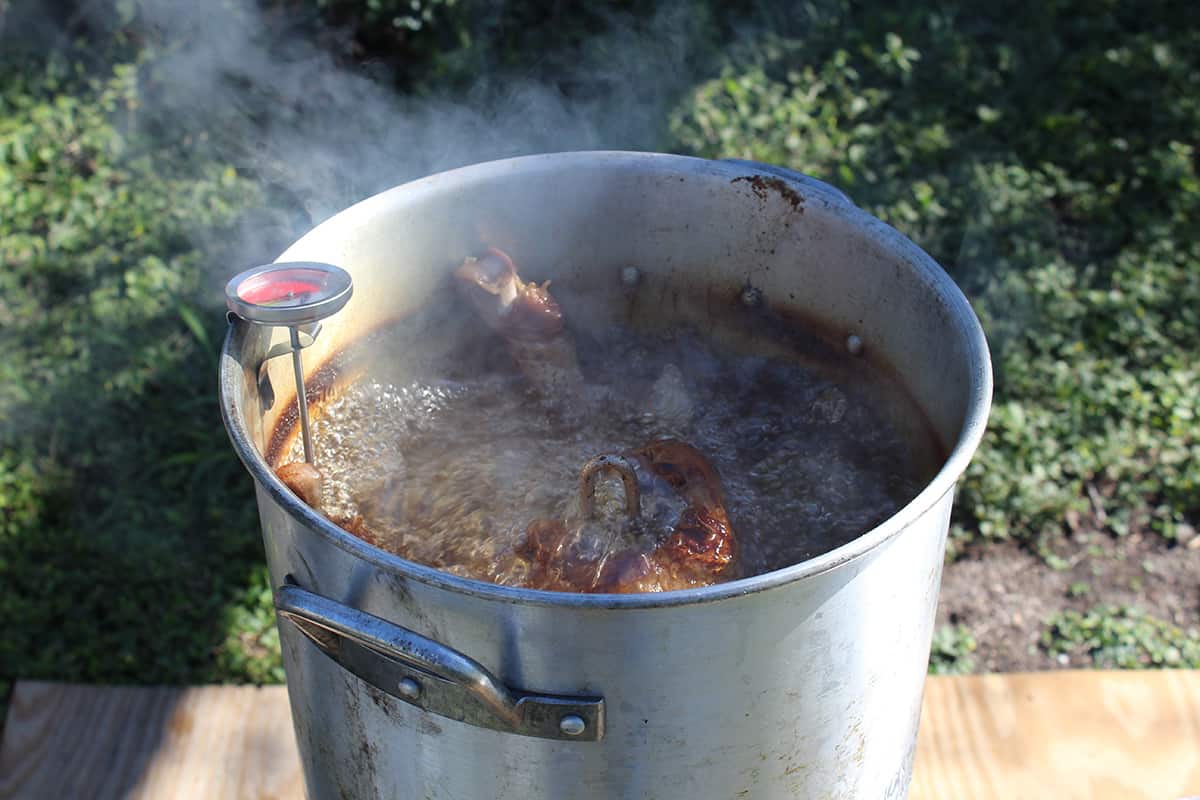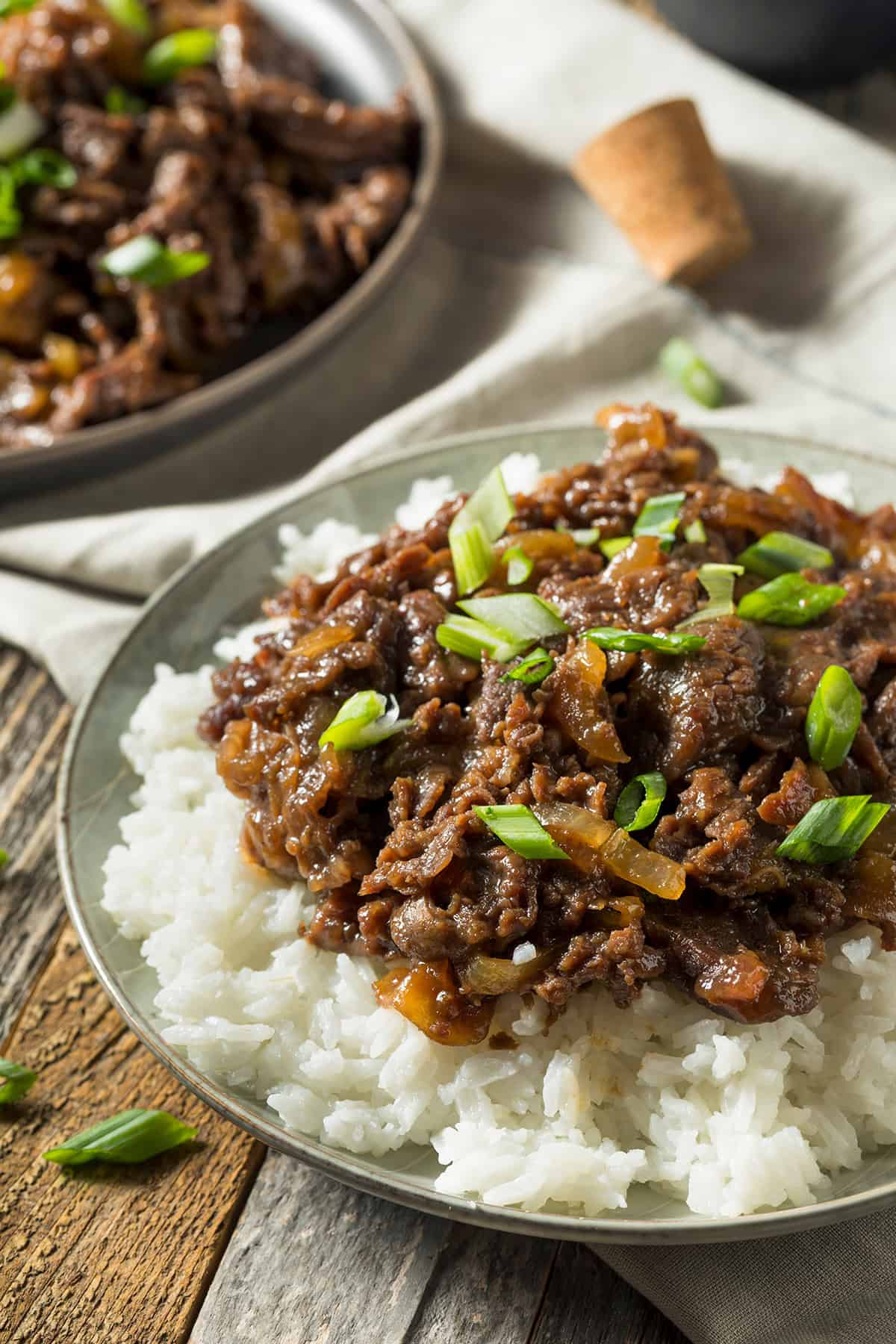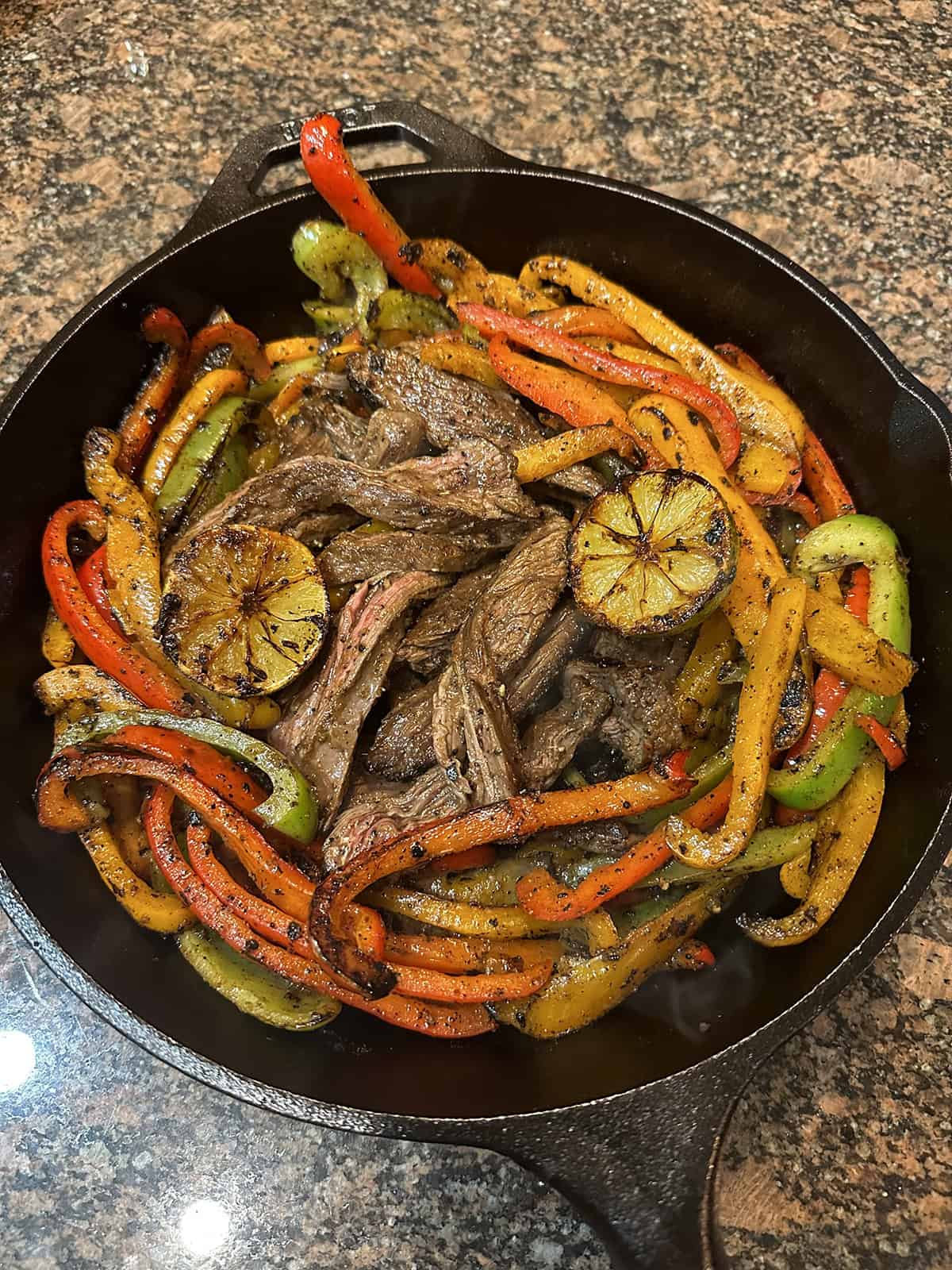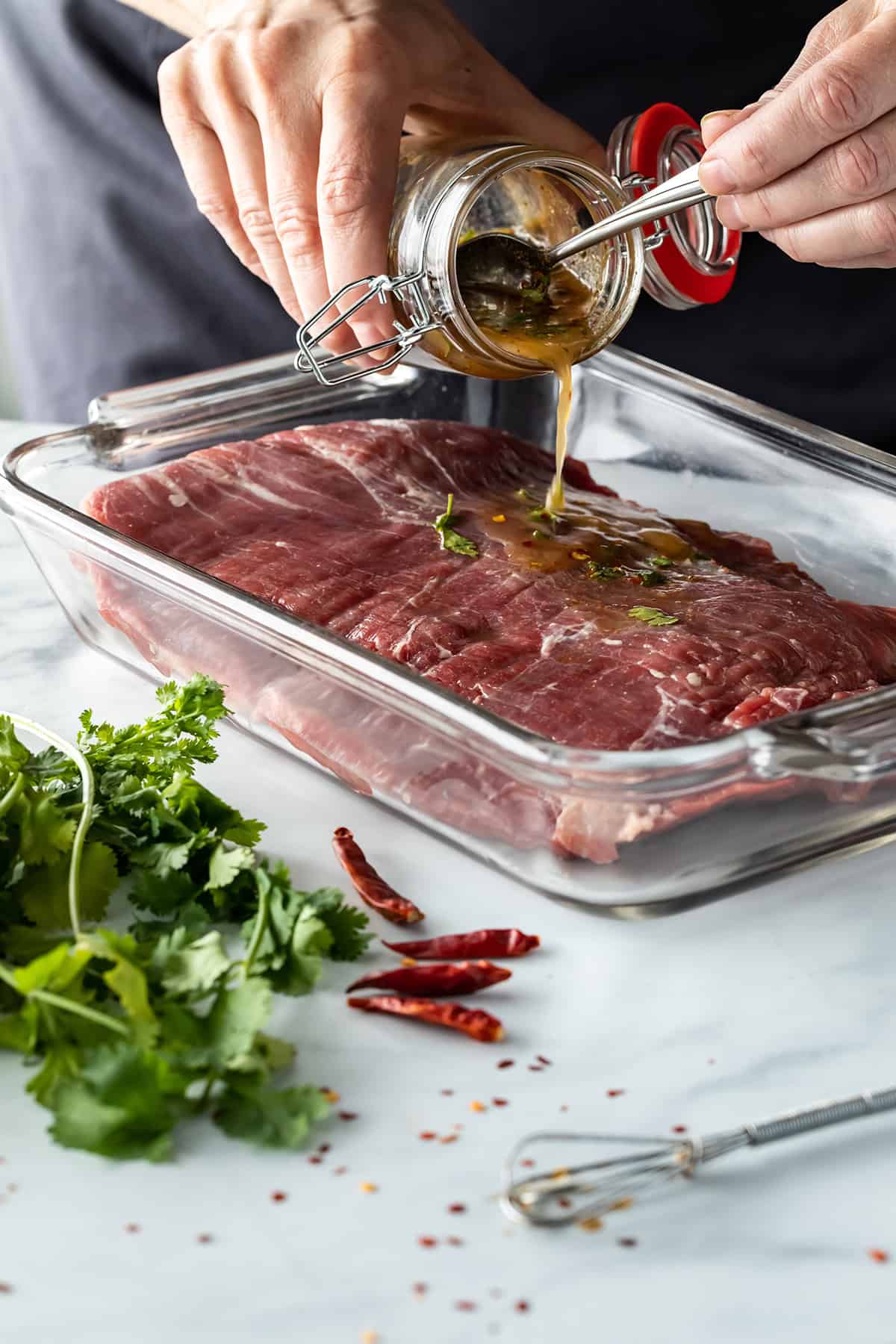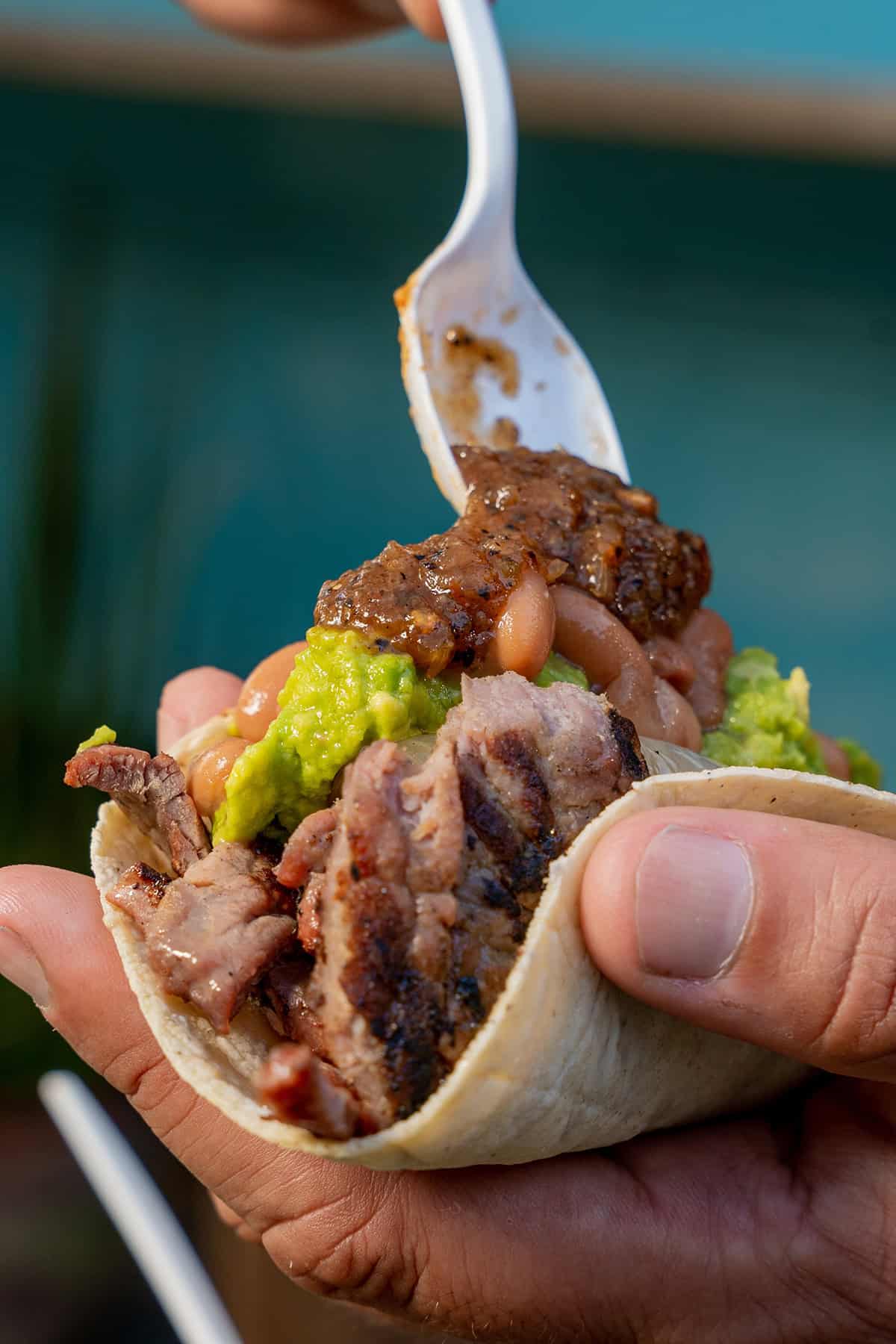With the summer coming to an end at an alarming rate, it’s about time we think about how we’re going to prepare a turkey for the upcoming Thanksgiving. You could bake a turkey like you often did, but if you want to spice things up, you should consider deep-frying a turkey. The only question is, how much oil does it take to deep-fry a turkey to perfection?
When deep-frying a turkey, you should use enough oil to cover the bird when it’s in the stockpot. For a 12- or 15-pound bird, 4 to 5 gallons of a high-smoke-point oil—e.g., avocado or peanut oil—should be enough.
In this guide, I’ll explain how much oil you need to deep-fry a turkey based on its size and how to prepare a bird for a hot oil bath.
How Much Oil to Deep-Fry a Turkey?
The key to deep-frying anything is to cover the food with oil. The same is true for deep-frying a large bird, such as whole turkeys or chickens.
To figure out precisely how much oil you’ll need, you should take your frozen turkey, place it inside the stockpot you’re going to use for frying, and fill it with enough water to cover the bird from top to bottom. After some experimentation, I’ve figured out the following:
- For a 9-pound turkey, you will need roughly 3 to 4 gallons of oil.
- For a 12 to 15-pound bird, which is the most common turkey weight range, you will need roughly 4 to 5 gallons of oil.
- For birds weighing 20 pounds and heavier, you will need more than 5 gallons.
These figures are based on how much oil it takes to cover a deep-fry-ready turkey in a 30-quart stockpot. It’s possible to get by with a bit less oil when frying your turkey in a wider stockpot, but you should still fill the pot with enough oil to cover the entire bird.
Why Does Deep-Frying a Turkey Use So Much Oil?
The answer is quite simple—you need enough oil to submerge the bird entirely. Leaving a tiny portion of the bird uncovered in oil goes totally against the purpose of deep-frying. In addition, you will have to flip it over to finish cooking, which is an additional step that nobody has time for.
What Stockpot Size Do I Need to Deep-Fry a Turkey?
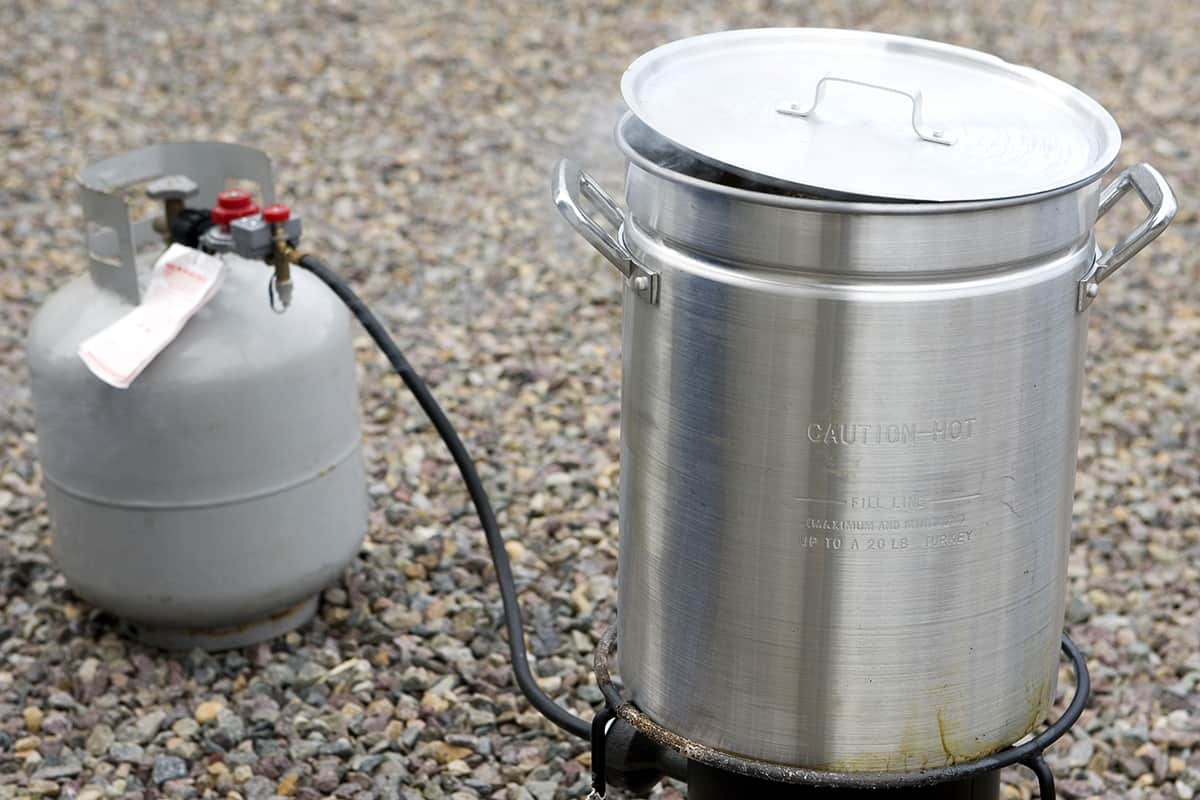
You should choose an above-average stockpot size for deep-frying turkey
A tall, wide stockpot not only provides enough space for your turkey to rest in the oil, but the tall walls will also prevent the oil from inevitably spilling over and covering your burner.
As insignificant as deep-frying a turkey sounds, it’s actually quite the dangerous project. A fully defrosted turkey that has been patted dry will still retain a ton of moisture that will cause a pot of boiling oil to bubble violently. When this happens, there’s a good chance that the oil may get onto the burner, which can cause humungous flareups.
Not only that, but when more oil spills out than remains in the pot, you will have to refill it with more cooking oil, which will take time to come up to temperature. During that period, your turkey will sit in lukewarm oil that will get into your bird instead of cooking it.
How Long Does It Take to Deep-Fry a Turkey?
If you manage to maintain a 375° cooking temperature from start to finish, it should take roughly 3.5 minutes per pound. So, a standard 15-pound bird should take around 52.5 minutes to finish frying in the stockpot.
However, a perfectly cooked turkey should have an internal temperature reading of 175 to 180° for its dark meat and 165 to 170°F for its white meat. To get the perfect temperature reading while deep-frying the bird, you should get a long-stem probe thermometer that sticks into the thigh or breast of your turkey.
How to Prepare a Turkey for the Deep Frier
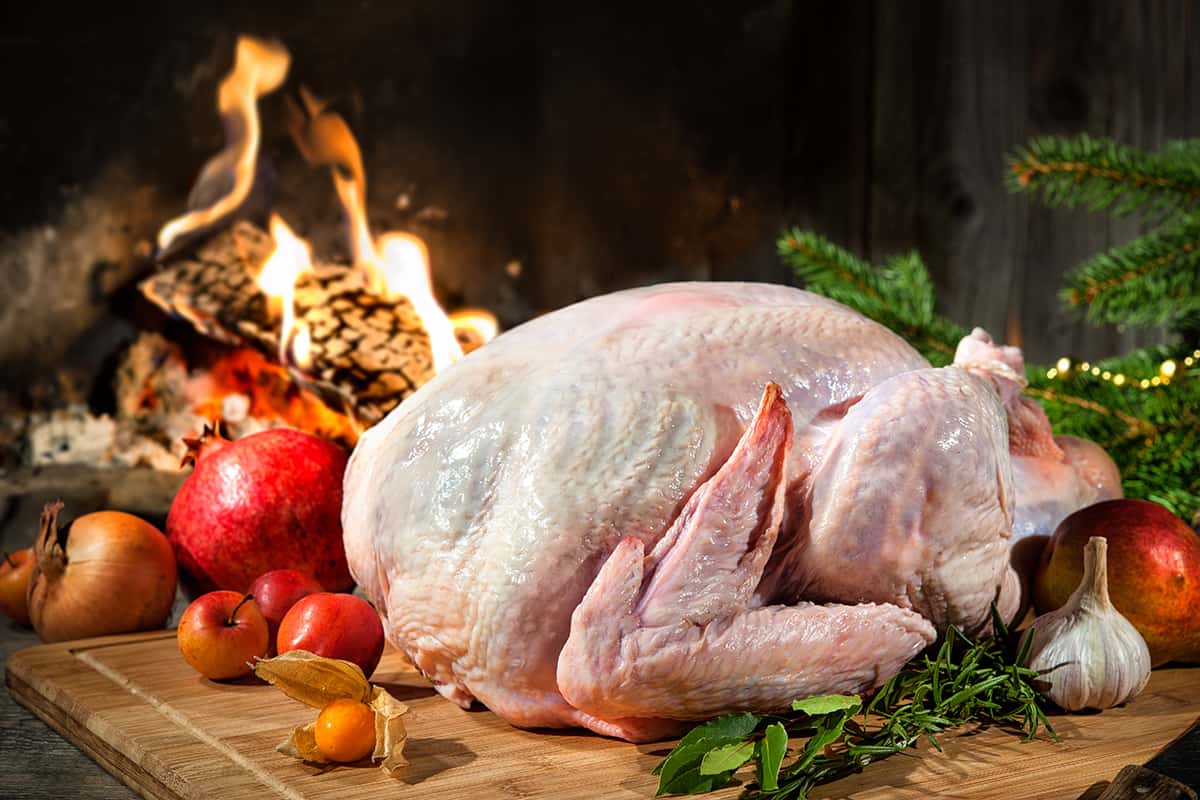
Step 1—After thawing the turkey, remove the wrapper and all of its innards, including the giblets and neck.
While we’re here, we might as well measure how much oil we need to fry the bird. Place the defrosted bird in a stockpot and fill it with water until the turkey is covered in 3 to 4 inches of water. Take the bird out and measure how much water is left in the pot using a measuring cup, or you can gauge it by eye (not very accurate).
Step 2—Brine your turkey in any way you want. Brining a turkey will introduce moisture into the bird. If you want your turkey’s breasts to be as juicy as its thighs, brining is the way to go. Alternatively, you can marinate the bird in any spices you want. Ideally, you will leave the turkey to soak in its brining liquid or absorb the marinade for at least 24 hours in the fridge.
Step 3—After brining or marinating the bird, pull it bird out of the fridge and pay it dry with paper towels. Here, we want to remove as much surface moisture from the bird as possible. There’s enough moisture inside the bird to cause the frying oil to boil over violently; we don’t need anymore. This is also the perfect time to get your burner and stockpot set up.
Step 4—While waiting for the oil to come up to temp (375°F), add any final seasons you want on the bird. It’s important to use a bit more than you think you’ll need since a lot of the seasoning will disintegrate the moment they make contact with the hot oil.
Step 5—Mount the turkey onto the large basket or perforated poultry rack that will fit inside your stockpot. Make sure you can move the rack around effortlessly before sticking it inside the stockpot. You might need an extra set of hands to help you move a 20-plus-pound turkey in and out of the pot.
Step 6—When the turkey is properly mounted on the poultry rack and the oil is up to temperature, it’s time to deep-fry that bod boy!
